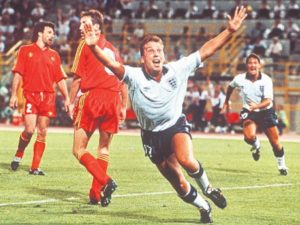Dave Woodhall on Villa and the World Cup.
It’s strange to think that we’re barely more than two weeks away from the start of the league programme. The heatwave is still beating down and the World Cup has hardly finished.
My Blues counterpart Andy Munro covered the tournament in more detail than I would normally but there were a few things that stood out for me. First, the country got behind the England side in a way that we haven’t seen for many years. Much of this was because the team are more likeable than they have been in decades, which in turn is down to the influence of Gareth Southgate, and I’ll never be persuaded that he didn’t learn that dignified bearing at the Villa.
It was the best England performance at the World Cup since 1990, even if a more in-depth analysis shows it was less of a triumph than it might appear at first glance.  England had a relatively easy group, a ludicrously straightforward run to the semis, and yet over ninety minutes managed three wins, two defeats and two draws from seven games. Averaged out over a league season that would get you round about the top six – not bad, but certainly not civic reception material. Anyway, Sir Graham said that finishing second is nothing to celebrate, so finishing fourth definitely isn’t.
England had a relatively easy group, a ludicrously straightforward run to the semis, and yet over ninety minutes managed three wins, two defeats and two draws from seven games. Averaged out over a league season that would get you round about the top six – not bad, but certainly not civic reception material. Anyway, Sir Graham said that finishing second is nothing to celebrate, so finishing fourth definitely isn’t.
Of course, harking back to 1990 shows how the face and public perception of English football has changed. Back then the game was in the doldrums, ignored by the public at large and hated by politicians. The team went out to Italy at war with the press, at odds with the population and afraid of their own supporters. They returned as (almost) conquering heroes and football was at the start of the upward trajectory that three decades later shows no signs of peaking.
And it was all down to the way in which one player in that team, in one brief moment, captured the imagination of the public. Yes, football owes much to David Platt and his goal against Belgium.
There was no chance of any Villa player doing the same this time round. Mile Jedinak did okay, Ahmed Elmohamady and Birkir Bjarnason probably less so. There wasn’t much point in trying to talent spot, as it’s highly unlikely that Villa would be able to afford even a Panamanian substitute.
And so on to the start of the real show. As has become a habit, Villa’s opening pre-season friendlies split the squad, with half at Telford and the other half at Kidderminster. The big quandry for supporters was trying to work out where Jack Grealish would be appearing, and as it turned out those at Agborough were able to watch a poignant reminder of what we’re almost certainly be going to miss before long, as well as enjoying the finest catering in British football.
Jack was clearly the best player on the pitch by a distance, his finest moment coming when he ghosted through the Harriers defence to lay on Harvey Knibbs’ equaliser in a 1-1 draw. Meanwhile, the rest of the team were having an easier time of it in a 3-0 win at Telford, with Jonathan Kodjia getting a couple and Conor Hourihane the third.
If those run-outs were more about getting the players to remember what each other looked like, the other pre-season tradition, a trip to Junction 10 of the M6 and a meeting with Walsall, provided marginally stiffer opposition. Hourihane opened the scoring after four minutes and completed a hat-trick with Villa’s fourth of a 4-1 win in a low-key game watched by a crowd of 3,501, with Villa supporters probably in the majority.
Even in such a match it’s clear that Villa’s squad as it stands is good enough to get into the play-offs at least. It’s equally clear that the team who lined up at the start at Walsall will be different to the one that will kick off the season proper. Unless something dramatic happens quickly we’re going to lose some of our star names, that’s inevitable. Their replacements aren’t going to be as talented, so not only are we going to need some Platt-like inspiration, the gap in quality has got to be made up by effort, by motivation and by tactical acumen. Over to you, Steve.


